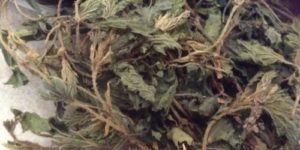No More Pink Eye – Calendula Tea Instead
Pink Eye can be a bit of a nuisance on a dairy farm. What makes it even more annoying is that it’s zoonotic. That simply means that it can be transferred between animals and humans. Several years ago, I developed a severe case of pink eye and went to the clinic to try to get rid of it. They gave me some eye drops, and I was quite happy to use them as I was desperate for relief. My eyes, however, just continued to worsen as the whites started to swell out past the iris. I just kept using the drops thinking it would eventually help but to no avail. After a quick call to the local clinic, I was advised to discontinue the use of the drops as I was having an allergic reaction to the sulfa in them. That’s when I began my quest for a more natural remedy.
My herb of choice is Calendula, also known as Pot Marigold. It does not grow wild in Wisconsin so I grow my own. However, it can be purchased at many health food stores. The flower petals are known to have healing properties and can be used for many ailments both internally and externally.
Calendula Wash Recipe: Put one handful of Calendula petals in a low wide bowl. Pour boiled water over and let steep for about 1 minute. Strain. Let water cool to room temperature and bathe your eyes in the solution as needed. For small children it may be necessary to use an eye dropper to get it in their eyes.
I’d like to mention that whenever we’ve used this remedy the pink eye appears to be gone overnight. I would recommend using the wash for a couple extra days just to be sure that it’s gone for good.
Resources:
- Calendula Flower Petals
- Chantal Tea Kettle (this just happens to be my favorite tea kettle)
- Eye Droppers

